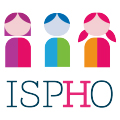Abstract
Gliomas are the most common CNS tumors in children and adolescents, and they show an extremely broad range of clinical behavior. The majority of pediatric gliomas present as benign, slowgrowing lesions classified as grade I or II by the WHO classification of CNS tumors. These pediatric low-grade gliomas (LGGs) are fundamentally different from IDH-mutant LGGs occurring in adults, because they rarely undergo malignant transformation and show excellent overall survival under current treatment strategies. However, a significant fraction of gliomas develop over a short period of time and progress rapidly and are therefore classified as WHO grade III or IV high-grade gliomas
(HGGs). Despite all therapeutic efforts, they remain largely incurable, with the most aggressive forms being lethal within months. Thus, the intentions of neurosurgeons, pediatric oncologists, and radiotherapists to improve care for pediatric patients with glioma range from increasing quality of life and preventing long-term sequelae in what is often a chronic, but rarely life-threatening disease (LGG), to uncovering effective treatment options to prolong patient survival in an almost universally fatal setting (HGG). The last decade has seen unprecedented progress in understanding the molecular biology underlying pediatric gliomas, fueling hopes to achieve both goals. Large-scale collaborative studies around the globe have cataloged genomic and epigenomic alterations in gliomas across ages, grades, and histologies. These studies have revealed biologic subgroups characterized by distinct molecular, pathologic, and clinical features, with clear relevance for patient management.
In this review, we summarize hallmark discoveries that have expanded our knowledge in pediatric LGGs and HGGs, explain their role in tumor biology, and convey our current concepts on how these findings may be translated into novel therapeutic approaches.
Dominik Sturm, Stefan M. Pfister, and David T.W. Jones
Journal of Clinical Oncology 2017 35:21, 2370-2377
https://ascopubs.org/doi/full/10.1200/JCO.2017.73.0242

